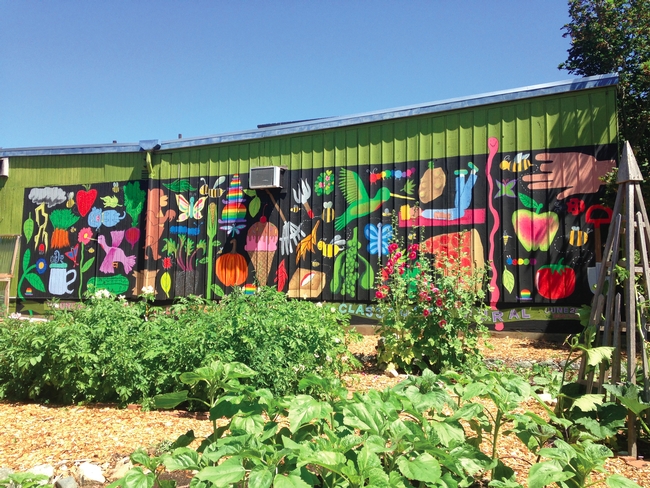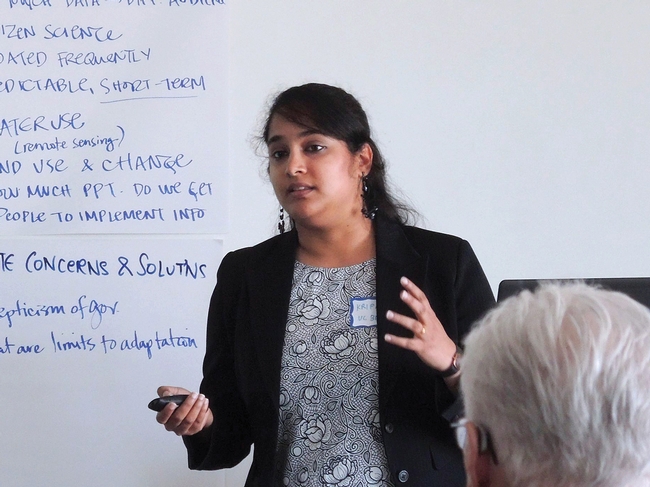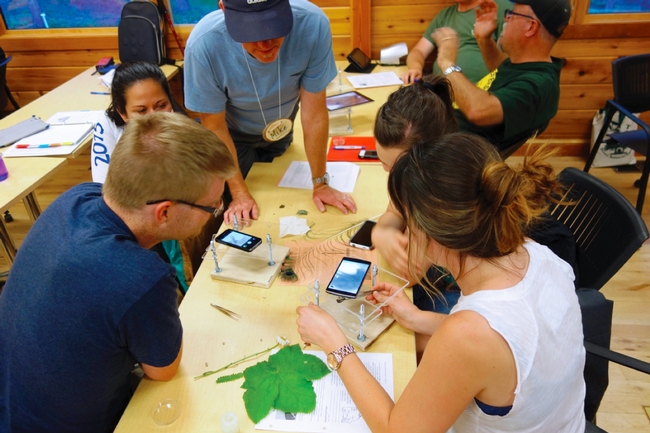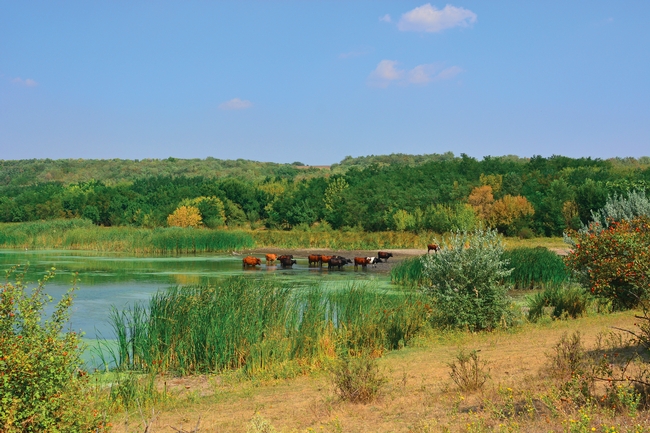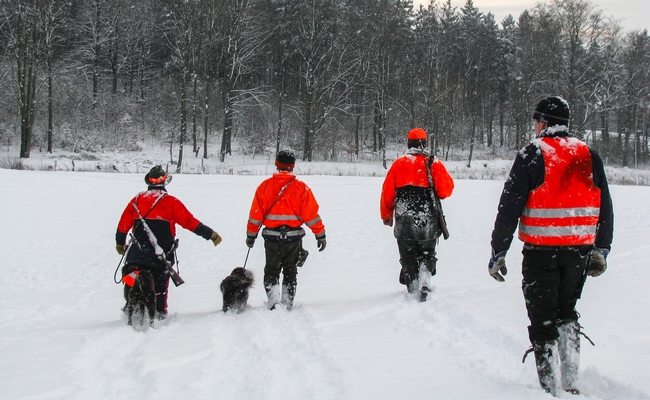Posts Tagged: graduate students
Bohart Museum Open House: What Insects Do Bats Eat?
When you watch bats emerge at dusk in the summer from the Yolo Causeway, have you ever wondered what insects they eat? UC Davis doctoral candidate...
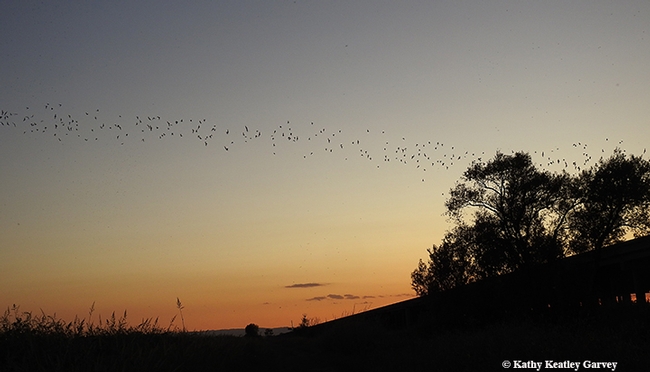
Mexican free-tailed bats leaving Yolo Causeway at dusk on Sept. 10, 2019. (Photo by Kathy Keatley Garvey)
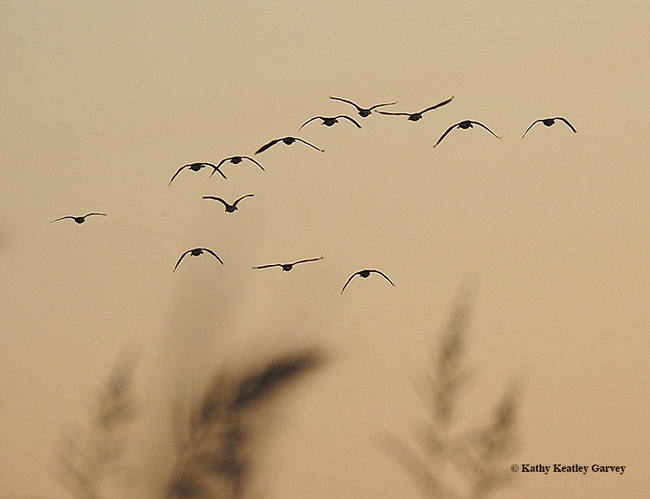
Mexican free-tailed bats ready to catch insects at the Yolo Causeway. (Photo by Kathy Keatley Garvey)
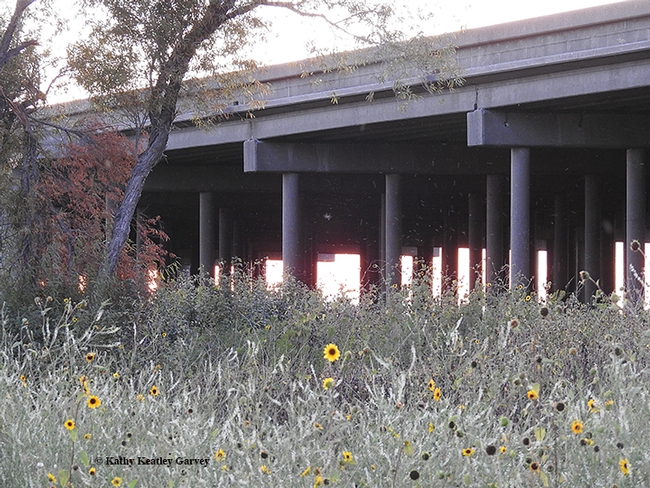
Thousands of bats nest in the Yolo Causeway during the summer. (Photo by Kathy Keatley Garvey)
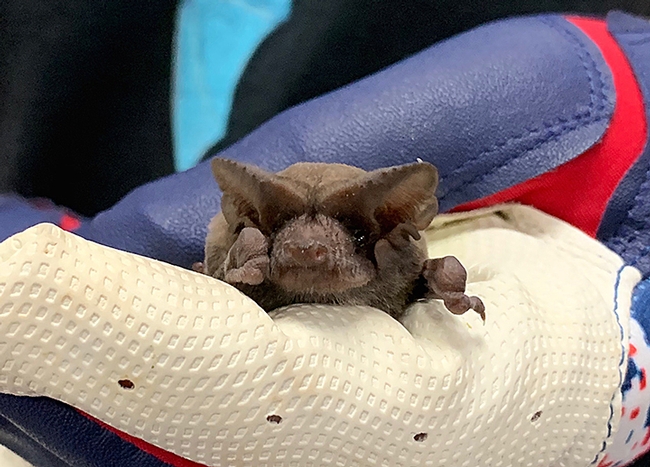
This is an image of a bat that Ann Holmes studies. (Photo by Shayan Kaveh)
Bumble Bees on the Move
Bumble bees stole the show during the Graduate Student Poster Research Competition at the fourth annual UC Davis Bee Symposium, themed "Keeping Bees...
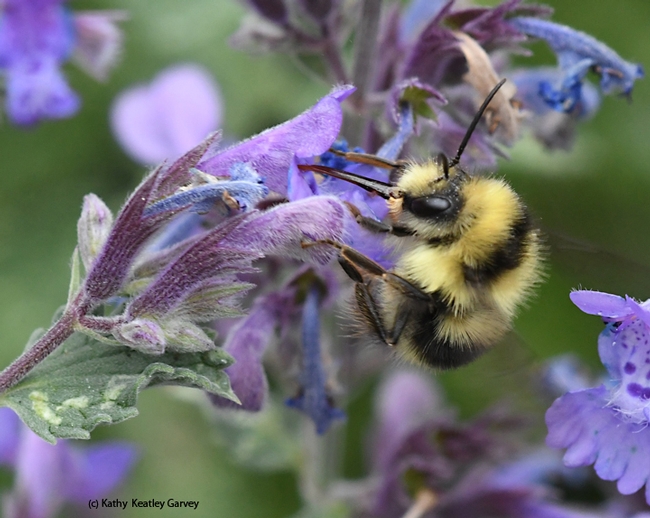
A bumble bee, Bombus melanopygus, nectaring on lavender in Vacaville, Calif. (Photo by Kathy Keatley Garvey)
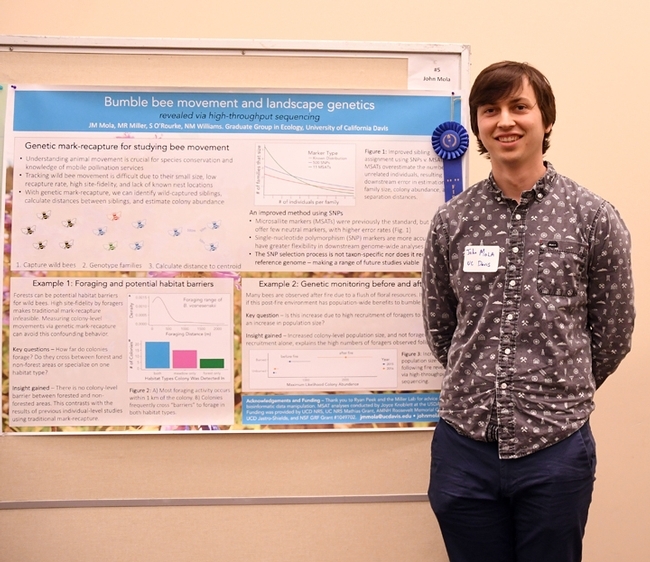
UC Davis doctoral student John Mola won the Graduate Student Research Poster Competition at the UC Davis Bee Symposium with his work on bumble bees. (Photo by Kathy Keatley Garvey)
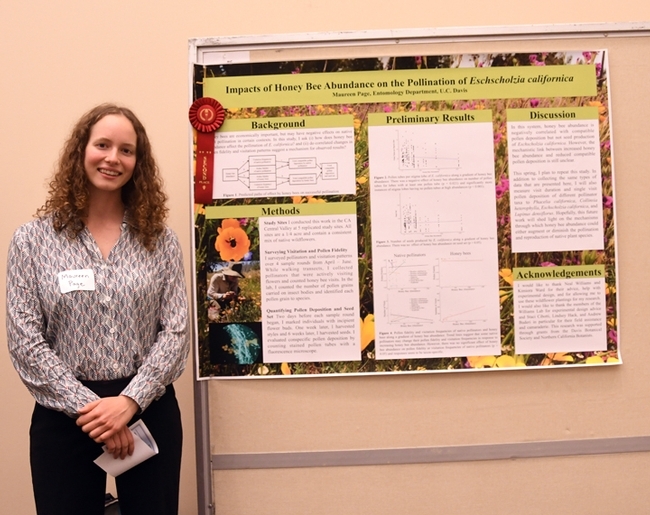
UC Davis doctoral student Maureen Page stands by her research poster on honey bees that won second place at the UC Davis Bee Symposium. (Photo by Kathy Keatley Garvey)
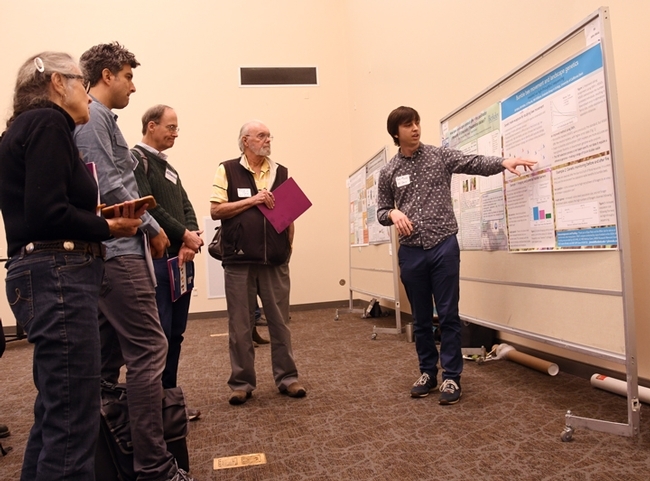
UC Davis doctoral student John Mola explains his research to the judging panel. From left are Mea McNeil, timer; Santiago Ramirez of the UC Davis Evolution and Ecology faculty; Tom Seeley of Cornell, the keynote speaker at the symposium; and Robbin Thorp, distinguished emeritus professor of entomology at UC Davis. (Photo by Kathy Keatley Garvey)
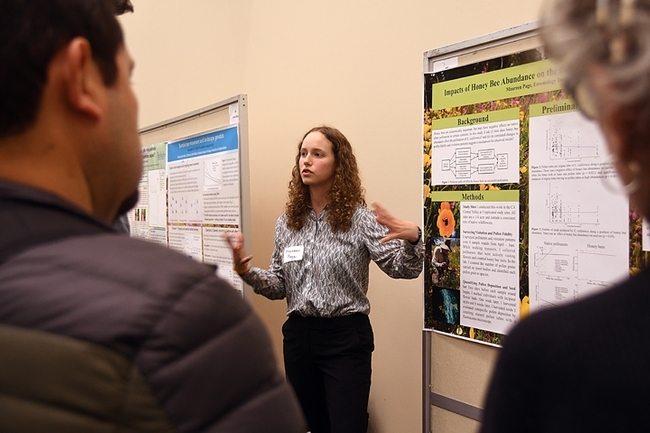
UC Davis doctoral student Maureen Page tells judges that honey bees may have negative impacts on native bees and native plant communities in certain contexts. (Photo by Kathy Keatley Garvey)
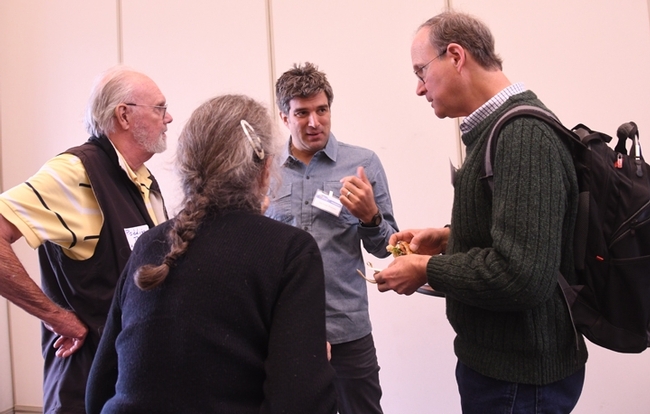
The panel of judges conferring. In the foreground is timer Mea McNeil. In back (from left) are judges Robbin Thorp and Santiago Ramirez of UC Davis, and Tom Seeley of Cornell. (Photo by Kathy Keatley Garvey)
The Beatles Have Nothing on The Beetles
It's the "in" thing. Insects--their beauty, their structure, their diversity--are inspiring noted fashion designers, but those fashion designers are...
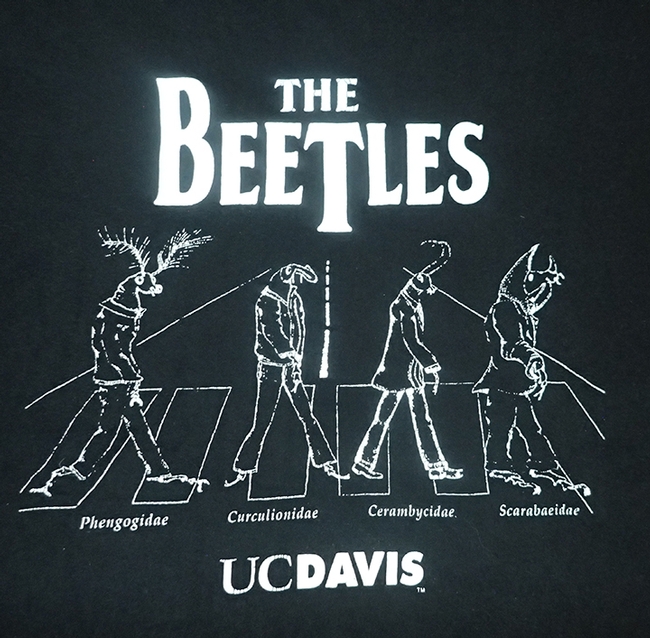
"The Beetles" is one of the most popular t-shirts designed, crafted and sold by members of the UC Davis Entomoogy Graduate Students' Association.
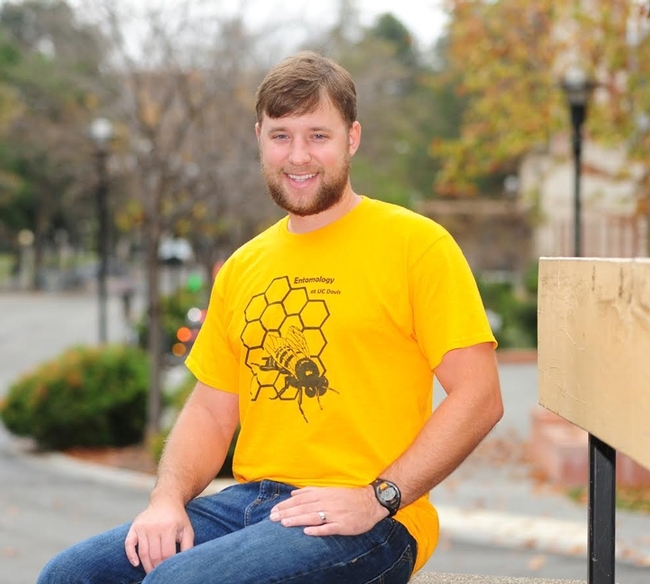
Honey bees are also a favorite. This t-shirt was designed by graduate student Danny Klittich, who now has his doctorate in entomology. (Photo by Kathy Keatley Garvey)
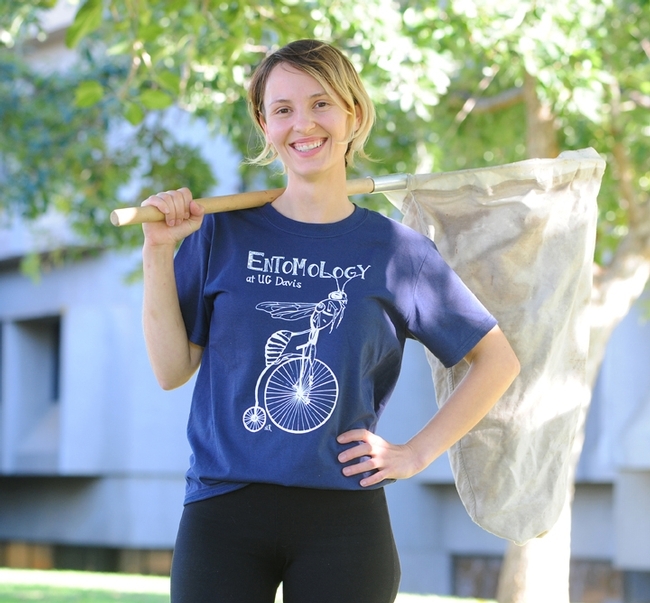
Stacey Rice, a former junior specialist in the lab of the late Extension entomologist Larry Godfrey, designed this t-shirt she is wearing. This is "Hymenoptera on Bicycle."(Photo by Kathy Keatley Garvey)
Graduate Students in Extension study key California concerns
In 2013, a group of graduate students in the Department of Environmental Science, Policy, and Management (ESPM) at the University of California, Berkeley sought out faculty support and successfully collaborated with UC Agriculture and Natural Resources (UC ANR) to launch the Program for Graduate Students in Extension (GSE). Participants receive up to a year of funding to conduct applied research and outreach to California communities, coordinate workshops and training events, and co-author materials with ANR academics. Over the course of the three-year pilot program, 14 students from across the College of Natural Resources at UC Berkeley have participated.
“There's really no program quite like this, where students can gain hands-on, graduate-level training in extension and outreach,” says ESPM professor John Battles, who chaired the program's steering committee. He adds, “We're grateful to all the UC ANR advisors and specialists who have offered invaluable mentorship to student fellows.”
Sustainable Food Systems and Climate Education
Alana Siegner (Energy and Resources Group, 2016–17 fellow) believes that to ensure the environmental sustainability of agricultural landscapes and to improve health outcomes for young people, it's important that students understand the scientific and social causes and consequences of climate change as it plays out in the U.S. food system. During her fellowship, she adapted existing climate change curricula to fit within farm-to-school programs, integrating food- and farming-specific examples into general lessons on climate adaptation and mitigation. The lessons, designed for students in grades 8 through 10, are hands-on, interdisciplinary, and solutions oriented, unfolding in both the classroom and the school-garden environments. Siegner piloted the curricula and other professional development resources with teachers at schools in Oakland and in Washington State's San Juan Islands.
Climate-Resilient Agriculture
Despite several advances in modeling techniques, climate projections are not widely used in agricultural decision-making. Kripa Akila Jagannathan (ERG, 2015–16 fellow) wanted to bridge this gap between climate science and decision-making needs by improving the understanding of what farmers consider relevant climate information. She interviewed almond growers in California about how they'd previously used climate information, what climatic variables were most relevant to them, and the content and communication methods that could make information on future climate more usable. Jagannathan's interviews showed that almond growers have experienced changes in climate over the past few decades that have affected plant growth. She hopes that providing growers with appropriate information on past trends and future projections can help them to make decisions that are better adapted to future climate.
Forestry and Ecosystem Education
Stella Cousins (ESPM, 2014–15 fellow) collaborated with the Forestry Institute for Teachers, a free program that provides K–12 teachers in California with knowledge and tools for teaching their students about ecosystem science and forest resource management. In addition to presenting current research to participating educators, she shared do-it-yourself miniature microscopes that can help learners of all ages explore seeds, cells, fur, and other tiny wonders. Magnifying tree-core samples from the Sierra Nevada as an example, she demonstrated how a lesson in dendrochronology can facilitate classroom learning on the ways forests grow and are shaped by climate. Cousins says, “I hope that this project will support existing efforts to make sound and sustainable ecosystem-management choices, and also help foster lifelong curiosity in California's youth about the natural world.”
Conservation and Land Easements
Conservation easements are currently one of the primary channels for protecting private land. Since easements restrict development for both current and future owners, resale value is presumably diminished, and landowners are typically compensated with a one-time payment from a conservation group. Reid Johnsen (Agricultural and Resource Economics, 2016–17 fellow) wanted to explore the relationship between rancher identity, community, and potential preferences for alternative payment structures. He surveyed landowners in Marin and Sonoma counties to gauge their support for different options, including leases and annual payments for ecosystem services. He also constructed an economic model of stakeholder behavior to help assess which payment structure delivers the greatest combined welfare to landowners, conservation groups, and the public.
Hunting and Conservation
Luke Macaulay (ESPM, 2014–15 fellow) surveyed private landowners and land managers in California to determine how recreational hunting may influence decisions regarding land-use and conservation practices. He regularly spoke on his survey findings and ran a workshop in Montana to encourage cooperative conservation efforts between hunters and environmentalists. “The feedback from the advisors on my mentorship team was invaluable in improving the quality of my research,” he reflects. The experience also had an impact on his career: In 2016, Macaulay was hired by CNR as a Cooperative Extension specialist in rangeland planning and policy.
Holiday Gifts Buggin' Ya?
So you're in a quandary. You have no idea what to get the nature lovers/insect enthusiasts on your holiday gift-giving list. It's buggin'...
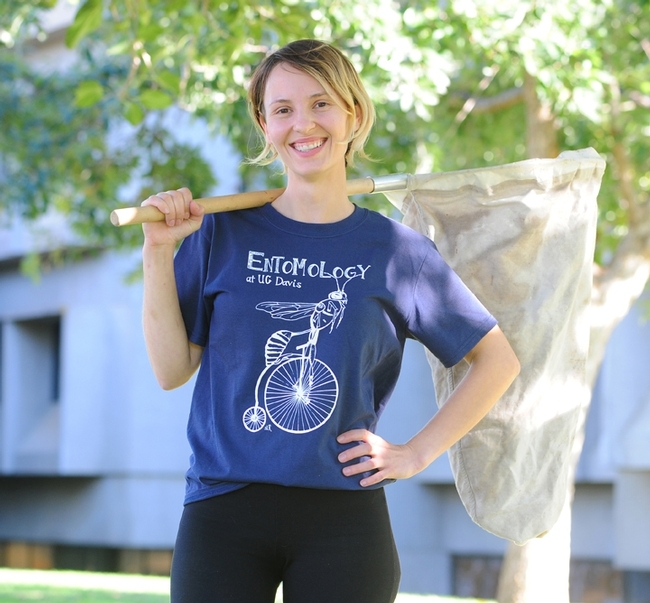
Entomologist/artist Stacey Rice wearing one of her prize-winning shirts--this one typifies UC Davis. (Photo by Kathy Keatley Garvey)


